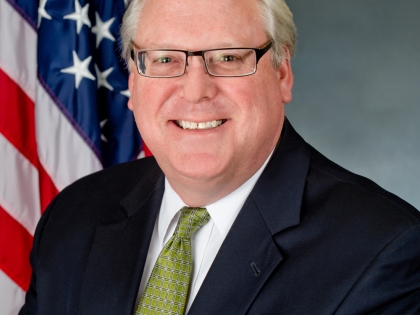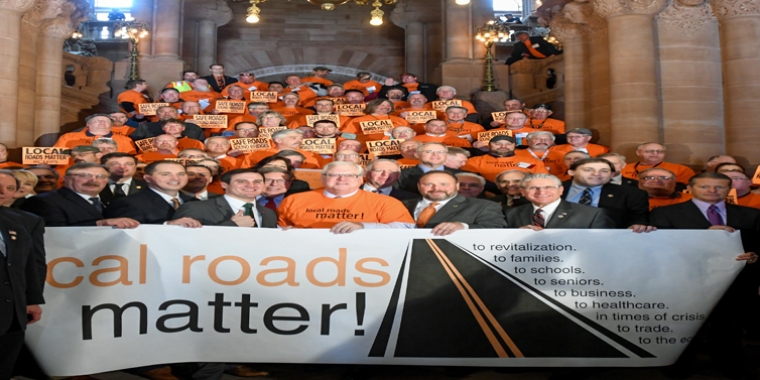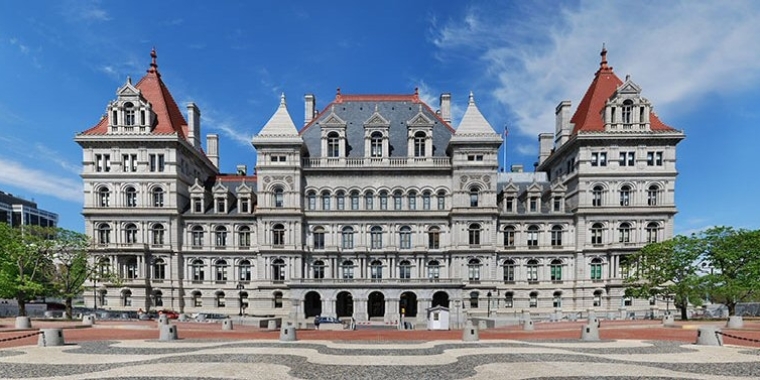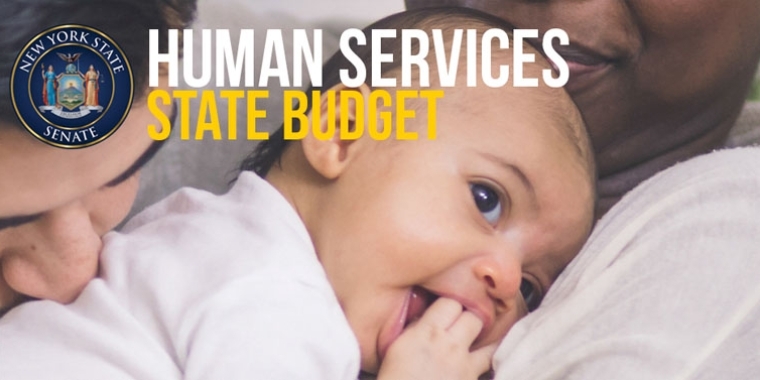
O’Mara and Palmesano welcome new winter recovery aid to help repair local roads: New funding announced a day after ‘Local Roads Matter’ coalition holds Albany rally for greater state investment
March 7, 2019

Albany, N.Y., March 7—A day after State Senator Tom O’Mara (R,C,I-Big Flats) and Assemblyman Phil Palmesano (R,C,I-Corning) joined legislative colleagues and local transportation leaders from across New York State for the annual “Local Roads Matter” rally at the State Capitol, the state today announced $128 million in new state funding to repair local roads damaged this winter.
In a joint statement, O’Mara and Palmesano said, “The ‘Local Roads Matter’ coalition continues to make itself heard in Albany and we appreciate the opportunity to help lead their ongoing fight for greater state investment. More than 600 county and town highway superintendents and highway employees travelled to the Capitol this week to help make the case once again for a stronger state-local partnership. It is the only answer to providing the local transportation infrastructure that our taxpayers, motorists, farmers, businesses, and communities deserve and need.”
Earlier today in Albany, Governor Andrew Cuomo announced new extreme winter recovery funding to support 91 paving projects and repair approximately 1,000 lane miles of pavement statewide, including across the Southern Tier and Finger Lakes regions.
O’Mara and Palmesano said that $7.1 million is being provided for the following projects to renew nearly 100 lane miles of roads in Chemung, Schuyler, Steuben, Tompkins, and Yates counties:
> $950,000 to resurface Rt. 366 from Route 13 to the Village of Freeville Line in Tompkins County;
> $650,000 to resurface Route 417 from the Interstate 99 Gang Mills exit to the Interstate 99 Erwin exit in Steuben County;
> $540,000 to resurface Route 417 from the Addison Village limit to just east of County Route 85 (Freeman Road) in Steuben County;
> $1.3 million to resurface Route 417 from the Tuscarora town line to east of County Route 102 in Steuben County;
> $850,000 to resurface Route 223 from Route 13 in the Village of Horseheads to east of Langdon Hill road in the Town of Erin, Chemung County;
> $1.5 million to resurface Route 79 from Route 414 to Route 227 (excluding the village of Burdett) in Schuyler County; and
> $1.3 million to resurface Route 14A from Lake Street to the Windmill Farm in Yates County.
Palmesano, who also represents a part of Seneca County, said that $1.0 million to resurface Route 96A from Route 96 (Village of Interlaken) to Route 414 in Seneca County is also included.
Over 600 local highway superintendents and highway department employees representing nearly every region of New York State have been in Albany this week as part of the annual “Local Roads Matter” advocacy campaign. As part of this effort since 2013, O’Mara, Palmesano, and many of their legislative colleagues joined local roads representatives and other local leaders from across New York at a rally yesterday to call for increased state support for local roads, bridges, and culverts.
This year the group is calling for increasing state base aid for the Consolidated Local Street and Highway Improvement Program (CHIPS) by $150 million to a total of $588 million. They are also seeking the restoration of a $65-million “Extreme Winter Recovery” allocation enacted last year but not included in Governor Andrew Cuomo’s proposed 2019-2020 state budget.
In a March 4 letter to Cuomo and legislative leaders, O’Mara, Palmesano and their Senate and Assembly colleagues wrote, “Local governments, for the foreseeable future, will continue to struggle to address budgetary demands in the face of the state-imposed property tax cap, rising pension and health care costs, and unfunded state mandates, among other burdens. Furthermore, despite the state’s increased commitment to CHIPS since 2013, base aid has remained stagnant over the past seven years. There is clearly a compelling case for New York State to take these proposed steps to address urgent local transportation and infrastructure shortcomings, and we believe it is simply the right thing to do. In order to meet the critical investment level needed to maintain and improve local roads, bridges, and culverts, a stronger state-local partnership is the only answer.”
Share this Article or Press Release
Newsroom
Go to Newsroom


